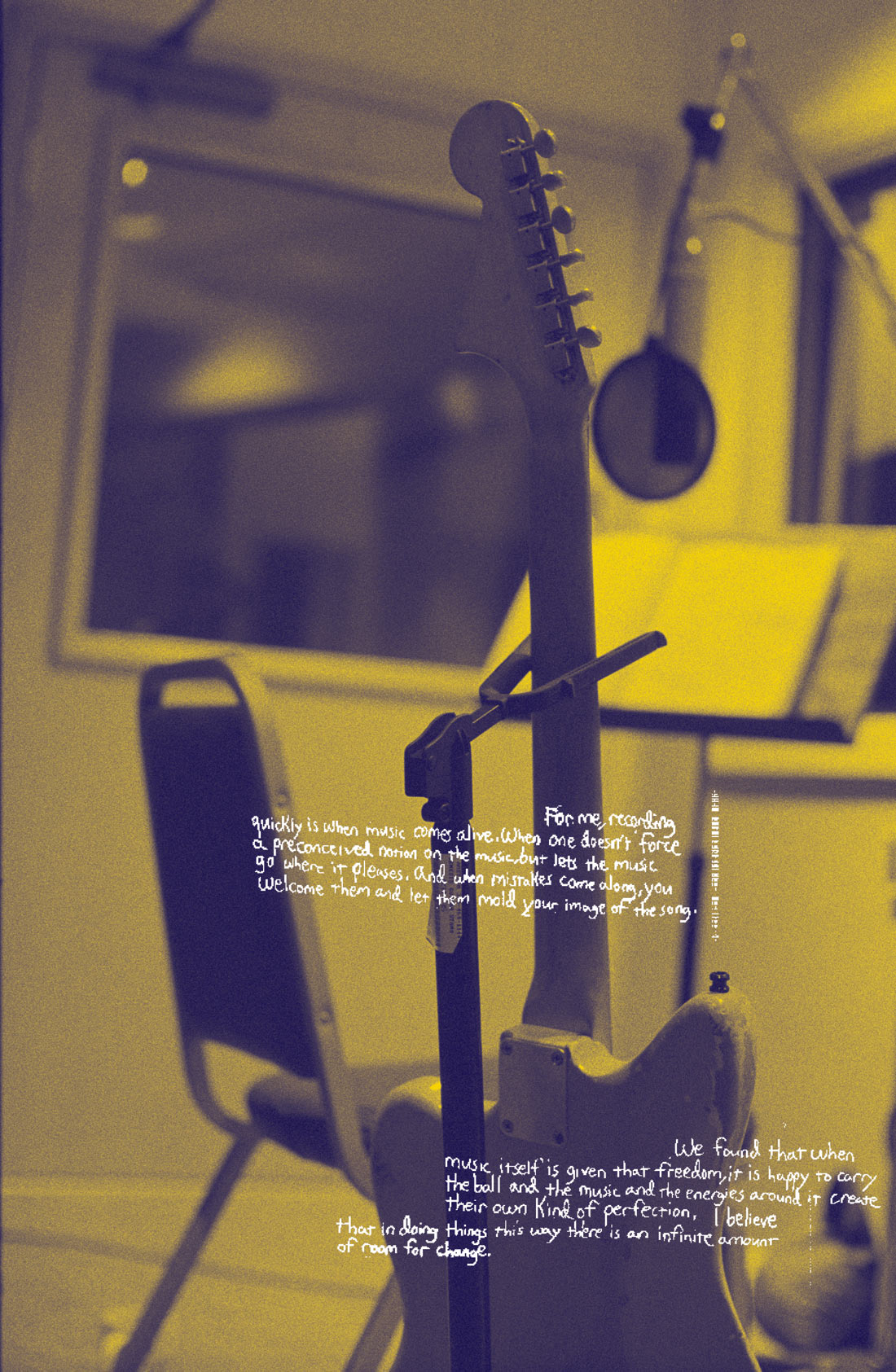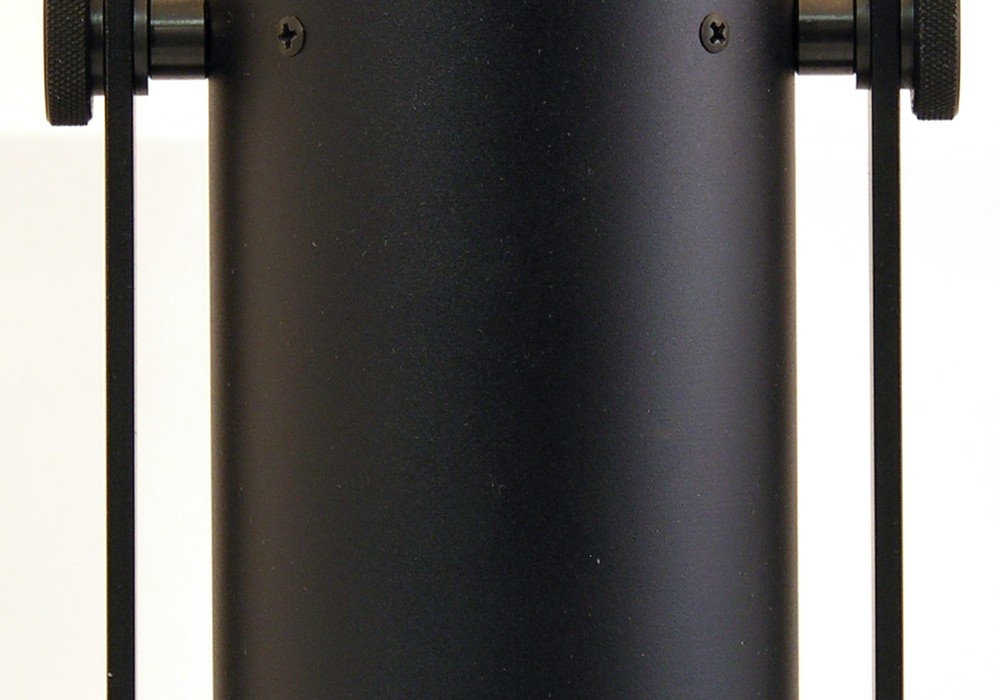When a representative from Neumann sent me this mic months ago, I was told that it was a killer vocal mic. So I did what I think many Tape Op geeks would have done; I tried it on everything else but vocal.
First up, electric guitar. I wanted to re-amp some tracks for the band Shepherdess (members of Fuzzy, Fudge, Consonant, The Operators) so I'd have some extra guitar flavors for final mixing. I put up a whole slew of mics, including the TLM 49. I really liked how the TLM 49 had a good deal of presence without having too much bite-great for warming up distorted guitars without making them sound dull or muddy.
Next, I tried it on kick drum. When the Philadelphia band Relay (Bubble Core Records) came through Boston, they stopped by my Cambridge studio for a quick session. We had very little time to "get sounds", so I put up three different mics in front of my DW 16" x 22" bass drum with Aquarian heads: a TC30K, an MD 421, and the TLM 49. Upon listening to the recorded tracks, I was surprised how composed the TLM 49 sounded; even with no damping inside the drum and the mic inches away from the front head, the TLM 49 didn't sound boomy. So that gave me the idea of placing the mic about 5 ft out from the front of the kit the next time I used the mic. Sure enough, I got a nice full image of the kit with the bass drum sounding neither boomy nor muddy. And although the cymbals sounded bright, they weren't too harsh considering there was some amount of high-frequency lift happening.
Overheads? The high-end wasn't as smooth and airy here as I would've liked. I preferred a pair of AKG C 460Bs or a Royer SF-12. Close mics on toms and snare? Not enough lower-mid punch for my taste, although what it
did pick up was snappy and still usable, and off-axis rejection was fantastic for a cardioid, large-diaphragm condenser mic-more like a hypercardioid than cardioid. Piano? Sweet sounding, even on my brightly-voiced Yamaha U3 upright, but I needed another mic to fill out the lows. Violin? Too bright, but not as screechy as other modern LDCs. Acoustic guitar? Here, I was pleasantly surprised again. Even close-mic'ed, the guitar wasn't too boomy, and although the highs were pronounced, they didn't cut my head off. Very swell.
And then finally, I tried the mic on vocals, and I immediately understood why the Neumann rep called this a killer vocal mic. It gives you a very "finished" sound that requires no EQ and no de-essing. Plug the mic into a preamp; feed the signal to your favorite compressor or leveler; hit record; done. If you're looking for a bigger-than-life, unfiltered vocal sound, it'll give it to you-no sweat. Perfect for voiceover work. For singing, you'll either love it or hate it-in an obvious enough way that you'll be able to move on to another mic if it ain't working for that particular situation.
I found that for vocals, the TLM 49 has a very smooth upper-mid presence without sibilance or buzziness. Although in general, my M7 and M9-capsuled Gefell mics (UM92.1S, UMT70S, M930, and M990) were creamier in the lower mids, TLM 49 vocals cut through dense mixes better. The mic was smoother than my Groove Tubes GT50, and although neither mic is what I'd call muddy, the TLM 49 was less cloudy while still sounding full. I love my Shure KSM32, but it's not always a flattering mic on voice because it tells it how it is-great midrange without any hype. But proximity effect ramps up quickly on the KSM32, so you need to keep at least 4" distance on vocals. Proximity effect on the TLM 49 is more linear and doesn't slope up so quickly, so it gives you much more room for... well... moving around when singing. And sometimes hype is what you want. Plus, you can scream up close into this sucker because it'll take all the SPLs you can give it.
After reading Mike Jasper's excellent review of the Wunder Audio CM7 mic (Tape Op #59), where he paraphrases Wunder designer Mike Castoro's explanation of how the U 47's grille helps to define its legendary sound, I pulled out the TLM 49's spec sheet. Physically, the TLM 49 looks more like Neumann's classic M 49 (and its cardioid-only sibling M 50) than the U 47, but all these mics share the same kind of peaks and dips in frequency response. There's a peak at 5 kHz, a dip in the 7-8 kHz range, and then another peak at 10-11 kHz. This explains the mic's presence at 5 kHz, the lack of sibilance at 8 kHz, and the sparkle at 11 kHz. Perhaps this is due to the TLM 49 having a grille made of three-layers of wire mesh-first large-gauge, then small-gauge, then large-gauge-like the classic Neumanns (as Mike from Wunder explains). The capsule also exhibits a natural low-end rolloff from 40 Hz on down, without the use of electronic filtering. From 40 Hz on up, the new Neumann's response is a smooth and pretty-much straight ramp up to 5 kHz.
Once I realized how "no-brainer" this mic is when it comes to recording vocals, it was a no-brainer decision to buy it. And whether I'm recording vocals or not, it's a great mic to pull out of the closet when I want a bit of high-end hype. Sure there are plenty of large-diaphragm condensers that will give you hype, but many modern LDCs can end up sounding harsh or muddy to my ears. The TLM 49, on the other hand, with its natural sibilance attenuation and low-end rolloff, sounds right.
($1499 street; www.neumann.com)
Tape Op is a bi-monthly magazine devoted to the art of record making.





_disp_horizontal_bw.jpg)